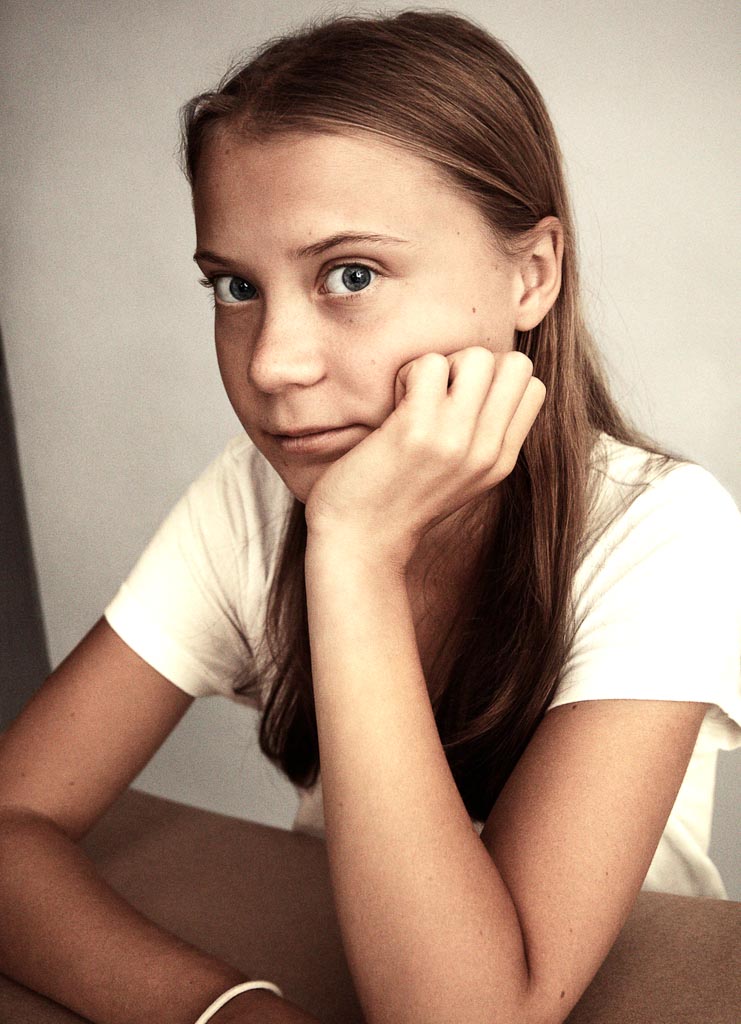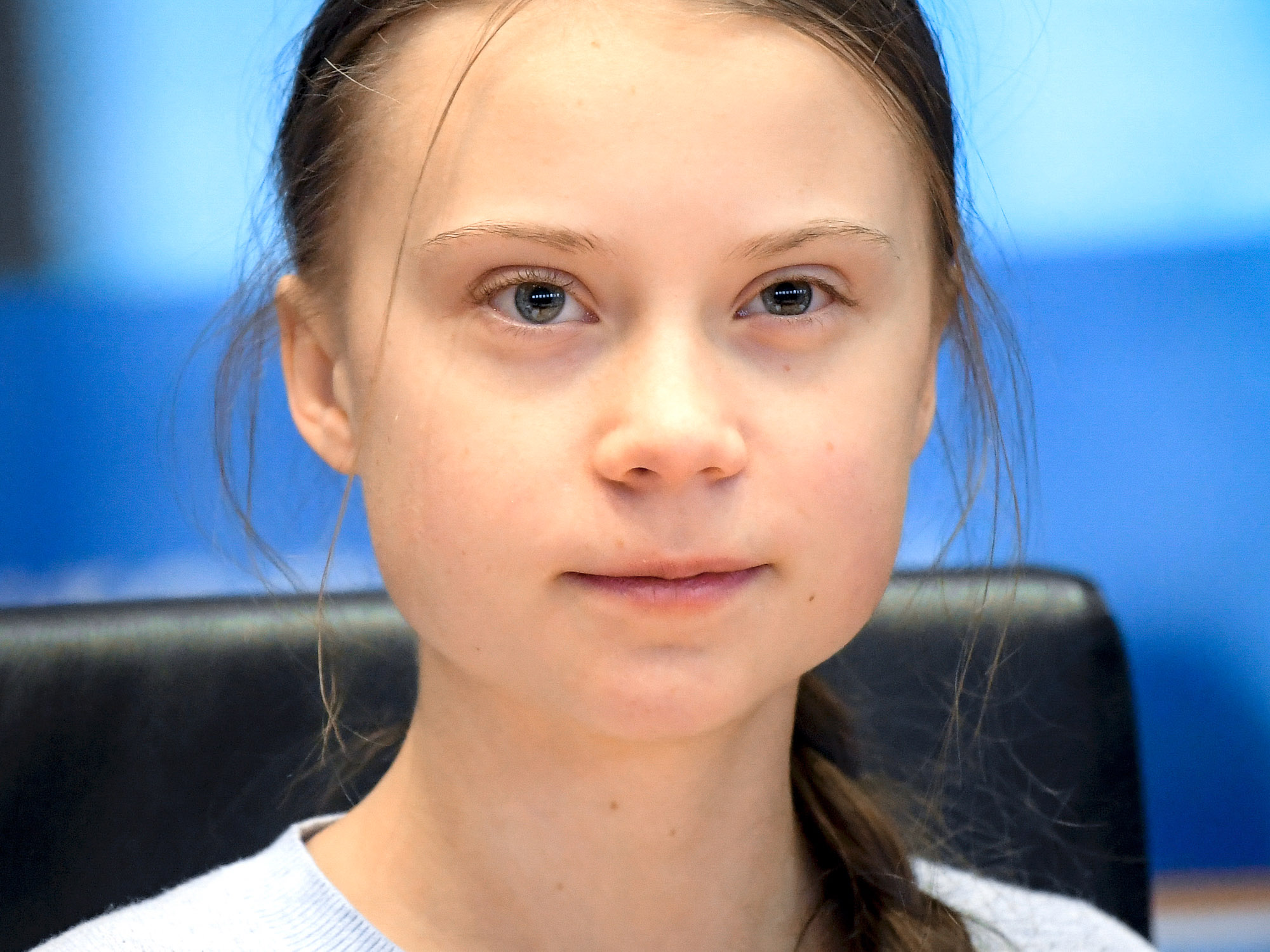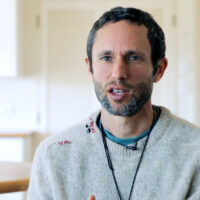Through her courage and work with the realities of our time, Greta Thunberg is a model for enlivened thinking and the rejection of dead thoughts and forms.
In an interview on December 27, 2021, Greta Thunberg gave an update on her thinking about the climate crisis. She said the recent COP26 conference on climate was only a PR event and a failure, noting that in the final document “they even watered down the ‘blah blah blah.’ Until now they had never even mentioned fossil fuels as the source of the problem, and now when they finally did, they changed the wording from “phasing out” to “phasing down.” She said that until something is set forth that actually leads to increased ambition, the document doesn’t mean anything.
A Decision Point
Rudolf Steiner’s series of 29 meditations on The Michael Mystery, given at the end of his life between August 1924 and March 1925 frame his thoughts in the context of the development of the Consciousness Soul. He notes that we are at a decision point. Will we choose to enliven our dead, abstract thoughts with living, independent forces from the spiritual world, or will we continue on the current path of destruction, seeing the world only materially?
Countless people are already bearing the brunt of the climate crisis, and have been doing so for a long time. This is not just a problem of the future. Thunberg notes that the principles we need to understand are time and resource-related. In other words, we have very limited time, we are using up the carbon dioxide budget right now, no matter which carbon dioxide budget you go for, and that cannot be undone in the future. The goal of keeping warming to 1.5 degrees Celsius is not safe. It is already 1.1 or 1.2, and people are already suffering. This is here and now.
Enlivened Moral Thinking to Meet the Crisis
Our clear thoughts need to be enlivened by the moral imperatives of the cosmos. Greta gives an example of this when she says: “Since there are no binding agreements that safely put us towards a safe future for life on Earth as we know it, that means that we have to use morals, and we have to be able to feel empathy with one another. That is all we have right now. Some people say that we shouldn’t use guilt or this sense of morality. But that is, quite frankly, the only thing that we have to use. So, therefore, we have to use it. And we have to make sure that we don’t lose that connection. We have to realize that we’re in it for the long run and that we need to take care of each other.”
Finally, when asked if she can imagine what the world looks like in 30 years, she says “I have no idea. I try not to think about that too much. I try to rather do as much as I can in the now and change the future instead of overthinking the future. Hopefully, we will take care of this, however that would look. But no matter what happens, if we continue to ignore it, the consequences are going to be much, much worse.”
That Good May Become

In her will to act, enlivening the idea of the reality of the physics of global warming with the moral forces available to humanity, Greta is an inspiring example of a conscious soul, meeting the needs of our time. Her gaze in this recent photo asks a question: “Are you aware of the severity of the crisis we are in?” Perhaps her chin in her hand is an expression of the weight she feels of how little consciousness we have. Yet, along with this, one can sense in her a feeling of hope, of not giving up, of an enduring commitment. Can we take this as inspiration and found with our hearts and direct with our heads, so that good can come from our conscious willing?
Image: Greta Thunberg during the ENVI Committee in the European Parliament on March 4th, 2020. Photo: Laurie Dieffembacq. Source: EP/ European Union 2020






If Steiner were with us today he would examine the science of climate science and not accept what has been given to us as dogmas. Many of us know there are deep economic reasons for why these ideas about CO2 being detrimental to the earth have been put out as facts that can’t ben questioned. It is sad to see many anthroposophists accepting this without question. Research the Club of Rome and the World Economic Forum. They are leading us towards a vision of world collectivism (Communism) that is the absolute opposite of the Threefold Social Organism.
Thank you for your words, very antroposophic, i’m disapointed with the goetheanum in the present day
I agree completely with ike Buron. It is awful to see the author of this article to use phrases as “Greta Thunberg is an example of consciousness soul” just because he shares the vision of Thunberg about the so called climatic crisis. This shows that the author has not the slightest idea about what Stainer really meant with enlivened thinking. A publication as “Das Goetheanum” should require a minimum standard of quality if it is not to become another “propaganda” media in the current “leftie” mainstream, something very opposed to Rudolf Steiner social vision.
I’m relieved to see the two comments here because I was thinking I made a mistake becoming a member of the Society. I am from Western Canada and a rancher. The Trudeau Liberal government is very much a disciple of Klaus Schwab and the World Economic Forum. The taxpayers of this country paid a huge amount for many in the Federal government to go to COP26 conference in Scotland and what they are doing to us – who live simple lives and feed the world – because of their ridiculous promises to the likes of those who think like Greta Thunberg is not right and Rudolf Steiner would NOT be supporting what is happening in Canada to those of us who work and live in freedom and are fighting government for freedom of body and will as this very moment.
It is true there are dark forces seeking to exploit the challenge of global warming for their own gain.
In the Michael Mystery thoughts, Rudolf Steiner explores the forces Michael has brought at this time for humanity’s development.
He notes Michael’s forces live in the heart, that hearts can now have thoughts.
He explores the nature of the development of the consciousness soul unfolding in humanity. Both luciferic and ahrimanic forces oppose it, but Michael holds the balance of a middle way where moral forces can have an effect on thinking.
In Greta Thunberg’s comments and actions, one can see a heart-based moral response she is bringing to her experience of the external reality of global warming.
I am a member of the Anthroposophical Society. The inclusion of the article on Greta Thunberg might be seen as an example of this journal’s “broad church” approach. Even so, the article is misjudged for reasons such as those referred to in earlier Comments. To go in the same direction as those Comments which have been critical of this piece, I would like to point out that making one’s case by way of juxtaposition (of the references to Rudolf Steiner’s writings about Michael and then to this girl) is depressing, in its being an extremely poor, one might even say illegitimate, means of exposition of an already contentious point of view.